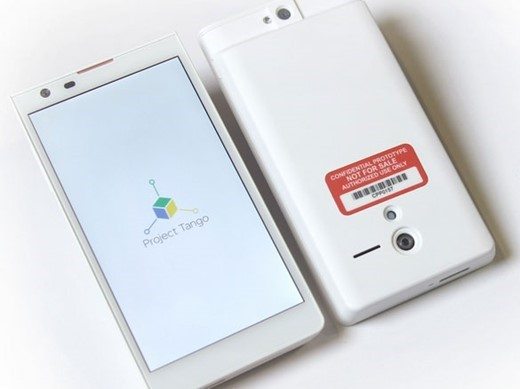Last Updated on 03/17/2014 by Chris Gampat
For the last couple years, the evolution of the smartphone has been somewhat stagnating. Besides faster processors, more memory, larger screens and more megapixels, nothing has really changed about the basic smartphone recipe. But make no mistake: the next evolutionary step in connected portable devices is aready in the making, and it’s called “Project Tango.”
Project Tango is Google’s vision of the next-generation smartphone, but it just might not be what you think it is. No, it’s not transparent, it doesn’t work with holographic projection, and it’s also not a brain-implant. What it is, then, is a device that lets you track your surroundings in 3D, in real-time, and create 3D models of anything and everything that you see. But it can do a lot more than that.
The Project Tango smartphone comes packed with four camera modules: three at the back, and one at the front. The three modules at the back comprise a standard 4 MP color camera, a 180° fisheye camera, and 320×180@5Hz depth camera. The module on the front has a 120° angle-of-view. In combination with a set of motion sensors, Project Tango is not only able to track its surroundings in real-time, but also its own movements in space. This way, not only can you create 3D models of the world around you, you can also interact with both the real world and the 3D model of the real world at the same time.
Now, what is the practical application of all this? For one, think of smartphone gaming. Instead of being confined to the world inside the screen of your phone, the in-game world can be combined with and extended to the world around you. What’s more, you could even create your own games based on the 3D models you created from scanning your surroundings. Doing a 3D scan of your apartment can help you to more efficiently shop for furniture. And for the visually impaired, Project Tango can be the eyes and help them navigate unknown places.
Currently, prototypes of the Android-powered 5″ device are in the hands of developers, because what good will such an advanced device do you if there are no apps available to make use of its capabilities. Honestly, we can’t wait to see what they’ll come up with. As for Project Tango’s possible applications for photographers, we could see it being helpful for location scouting, for planning studio setups etc. What would you use Project Tango for? Let us know!
Via dpreview connect


